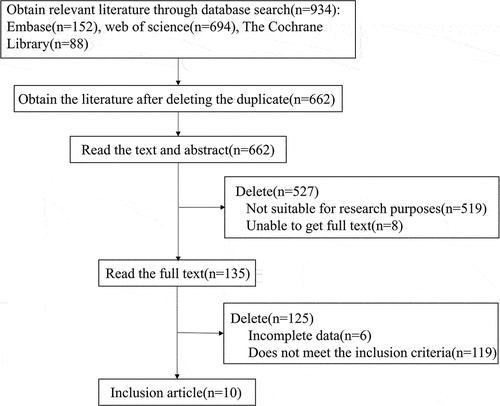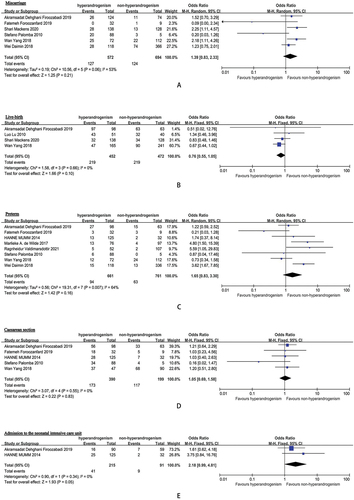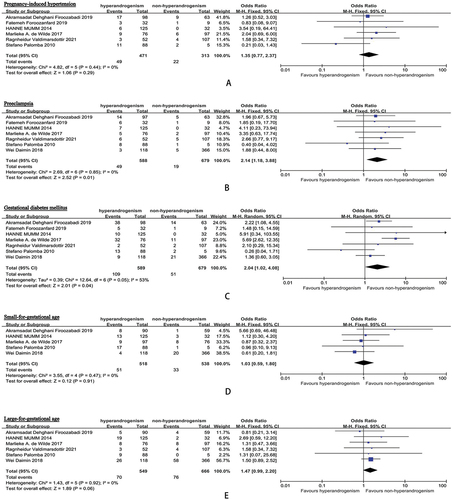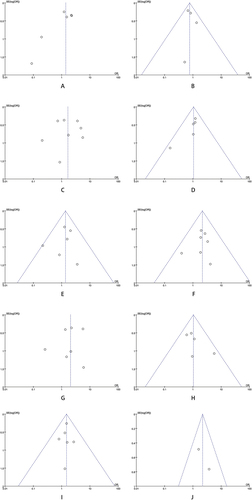Figures & data
Figure 1. Preferred reporting items for systematic reviews and meta-analyses flow diagram of study selection.

Table 1. Basic characteristics of the included studies.
Figure 3. Pregnancy outcomes comparison: hyperandrogenic PCOS phenotype (polycystic ovary syndrome) versus non-hyperandrogenic PCOS phenotype (A: miscarriage; B: live-birth; C: preterm; D: caesarean section; E: admission to the neonatal intensive care unit).

Figure 4. Pregnancy complications comparison: hyperandrogenic PCOS phenotype (polycystic ovary syndrome) versus non-hyperandrogenic PCOS phenotype (A: pregnancy-induced hypertension; B: preeclampsia; C: gestational diabetes mellitus; D: small-for-gestational age; E: large-for-gestational age).

Figure 5. Funnel plot of comparison: hyperandrogenic PCOS phenotype (polycystic ovary syndrome) versus non-hyperandrogenic PCOS phenotype (A: miscarriage; B: live-birth; C: preterm; D: caesarean section; E: pregnancy-induced hypertension; F: preeclampsia; G: gestational diabetes mellitus; H: small-for-gestational age; I: large-for-gestational age; J: admission to the neonatal intensive care unit).


